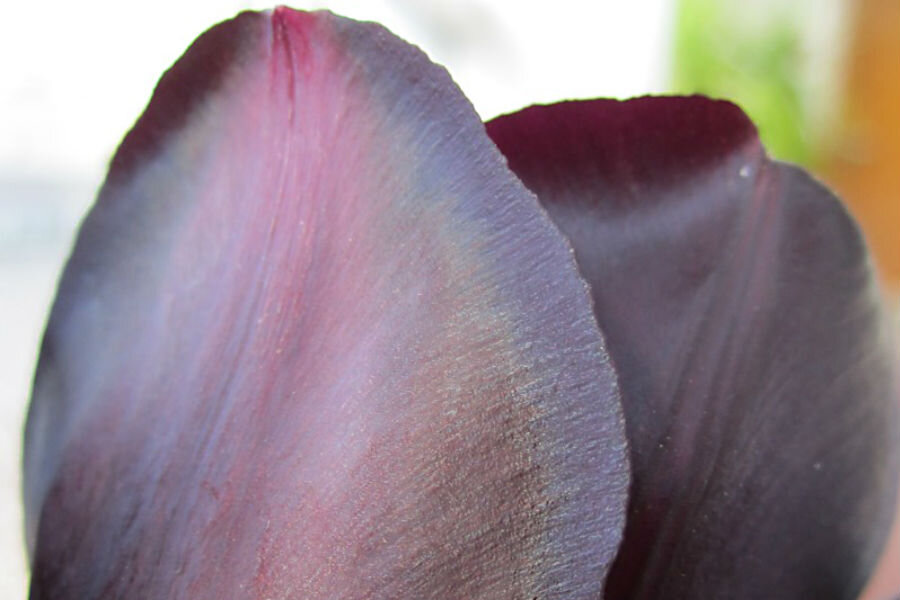Why are some flowers so pretty? Scientists explain.
Loading...
People have long been captivated by exotic plants like Queen of the Night, a tulip whose iridescent shimmer has been likened by scientists to “moonlight glittering off regal jewels.”
Now, researchers at McGill University have discovered that what’s driving the flower's colorful sparkle is actually a result of its physical, not its chemical, structure.
A new study published Tuesday in The Journal of Chemical Physics describes how plant cellulose rearranges into wrinkled surfaces when it meets light, resulting in beautiful, iridescent effects and the changing of colors.
This “self-assembly” explains how, much like butterflies and beetles, the Queen of the Night tulip receives its sheen from an internal structure reacting to factors like humidity and temperature – which splits white light into colors.
This structure is known as a photonic crystal, reports Gizmodo. “Certain naturally occurring photonics crystals — like those found in butterfly wings or the Queen of Night tulip … scatter light selectively, much like a diffraction grating. The effect is similar to what happens when light hits the tiny grooves etched into a CD, causing flashes of rainbow color.”
The amount of light absorbed by pigments can also play a role in how some organisms change color, according to the study. For example, “the black melanin pigment present in a Japanese jewel beetle cuticle absorbs the light fraction scattered from inner layers, which contributes in determining the iridescent color.”
The role of cellulose has long been studied in terms of its mechanical properties, said the team. Alejandro Rey, the chemical engineer at McGill University who led the study, said its tendency to twist as you examined each layer of cellulose was likely to “provide strength,” according to a statement.
“The fibers reinforce in the direction they are oriented,” said Professor Rey. “When the orientation rotates you get multi-directional stiffness.”
Survival is a plant’s top priority, Claude dePamphilis, a plant evolutionary biologist at Penn State University, told Phys.Org.
“The beauty of the flower is a byproduct of what it takes for the plant to attract pollinators,” he said. “The features that we appreciate are cues to pollinators that there are rewards to be found in the flower.”
Wanting to see how the cellulose twisting would affect plants’ appearances, the team devised a computational model, and found that “subsurface helices naturally caused the surface to wrinkle. The tiny ridges had a height range in the nanoscale and were spaced apart on the order of microns.”
Gizmodo reports:
But it’s not just the twisting pattern that influences color in some plants: how much water is stored in those cellulose layers can also affect the optics. The more water there is, the less tightly those layers twist, so the resulting ridges are spaced further apart. And those spaces determine which wavelengths of light get diffracted (the “pitch”). For instance, varying humidity can cause wavelengths to shift from 460 nm (visible blue light) to 520 nm (visible green light).
The paper is being praised as the first insight into how twisting cellulose can inform more than just mechanical behavior. The team is hoping, for instance, that their model will inform the design of optical devices like color-changing humidity sensors.
“The results show the optics [of cholesteric cellulose] are just as exciting as the mechanical properties,” Rey said. “We've shown this armor can also have striking colors.”






